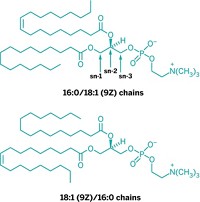Advertisement
Grab your lab coat. Let's get started
Welcome!
Welcome!
Create an account below to get 6 C&EN articles per month, receive newsletters and more - all free.
It seems this is your first time logging in online. Please enter the following information to continue.
As an ACS member you automatically get access to this site. All we need is few more details to create your reading experience.
Not you? Sign in with a different account.
Not you? Sign in with a different account.
ERROR 1
ERROR 1
ERROR 2
ERROR 2
ERROR 2
ERROR 2
ERROR 2
Password and Confirm password must match.
If you have an ACS member number, please enter it here so we can link this account to your membership. (optional)
ERROR 2
ACS values your privacy. By submitting your information, you are gaining access to C&EN and subscribing to our weekly newsletter. We use the information you provide to make your reading experience better, and we will never sell your data to third party members.
Analytical Chemistry
Mass Spec Variability Hinders Biomarker Analysis
Ions used to identify biomarkers in metabolite profiling can vary from one instrument to the next
by Celia Henry Arnaud
September 20, 2010
| A version of this story appeared in
Volume 88, Issue 38
Ions used to identify biomarkers in mass spectrometric metabolite profiling can vary from one instrument to the next, researchers report (Anal. Chem., DOI: 10.1021/ac1016612). This observation could have consequences for biomarker discovery and the reproducibility of experiments conducted in different laboratories or even in the same laboratory. Georgios A. Theodoridis of Aristotle University Thessaloniki, in Greece, and coworkers split the eluent from single ultra-high-pressure liquid chromatography separations of urine samples from rats treated with an antituberculosis agent into two equal streams. The streams were then simultaneously analyzed by two different mass spectrometers, a triple-quadrupole linear ion trap instrument from AB/Sciex and a quadrupole time-of-flight instrument from Waters. The mass spec data were first analyzed with the manufacturers’ data analysis software and then with third-party software. In all cases, multivariate statistical methods were able to separate the samples into high- and low-dose groups. Several ions, including those identified as significant for separating the samples, were found to be unique to one instrument or the other, even with the single preparation and separation. The findings “highlight the difficulties facing approaches toward standardization in metabolomics/metabonomics studies employing LC-MS-based strategies,” Theodoridis and coworkers write.




Join the conversation
Contact the reporter
Submit a Letter to the Editor for publication
Engage with us on Twitter